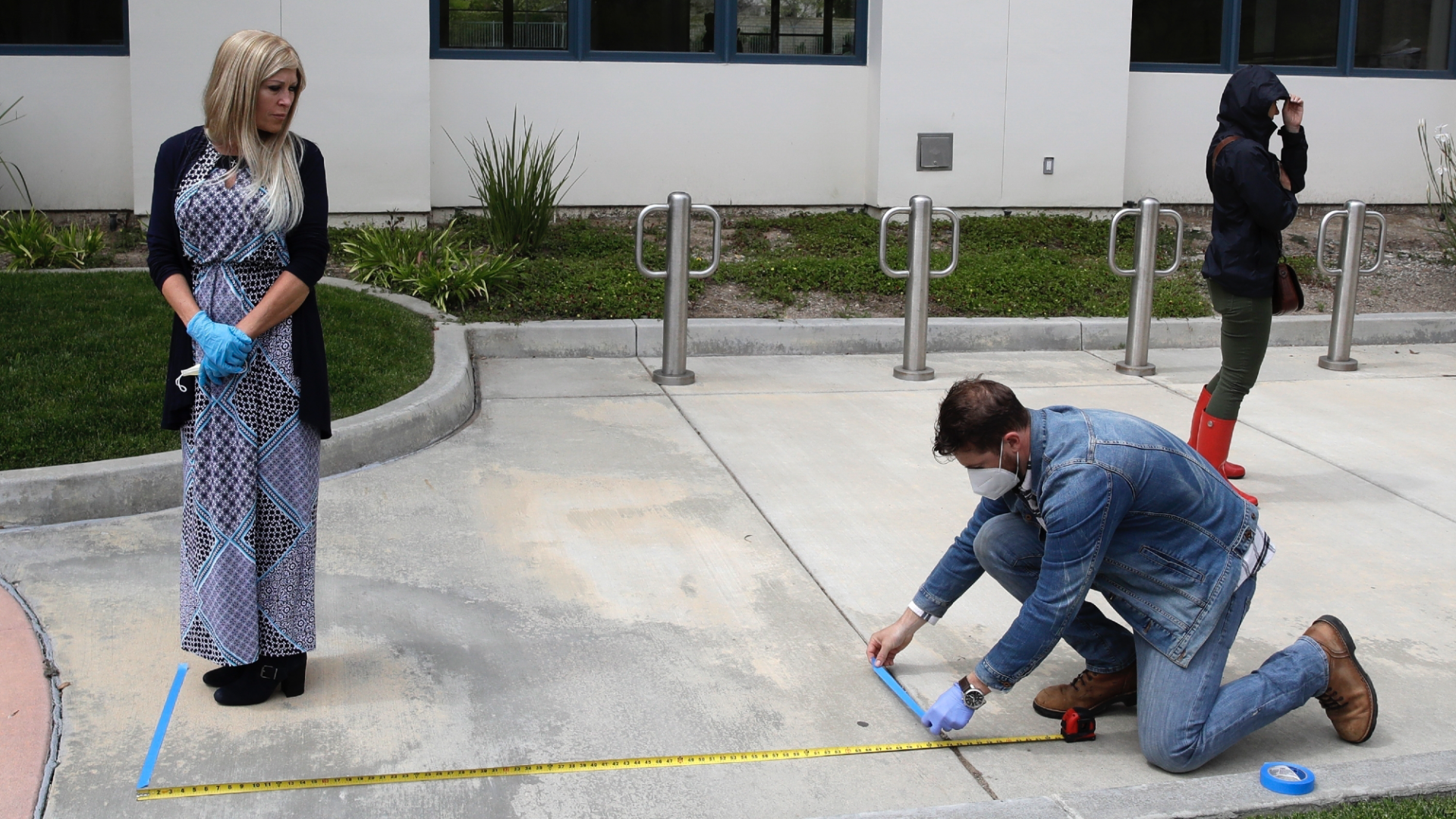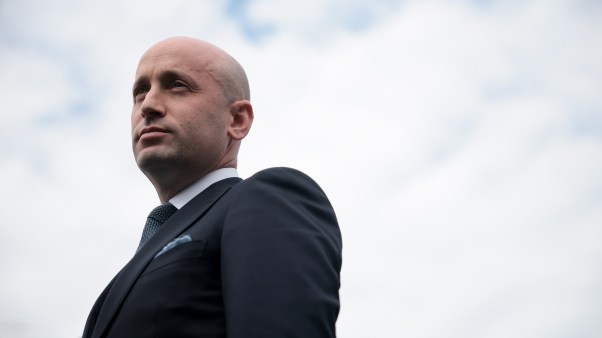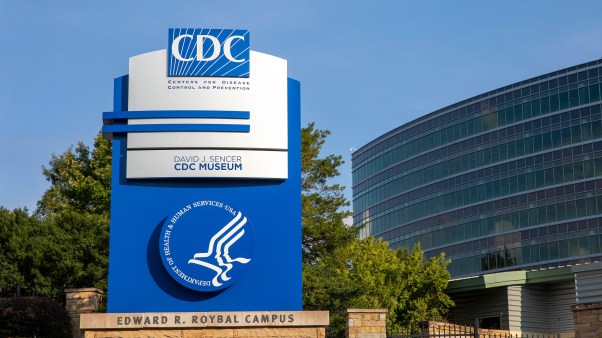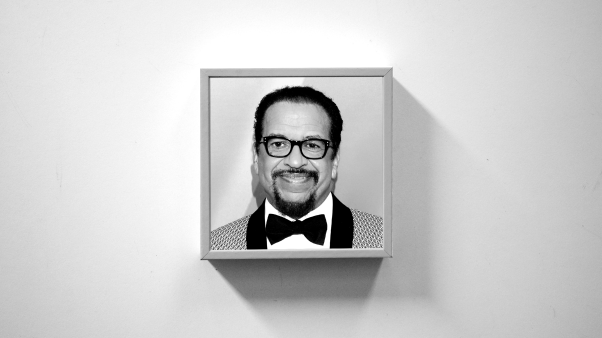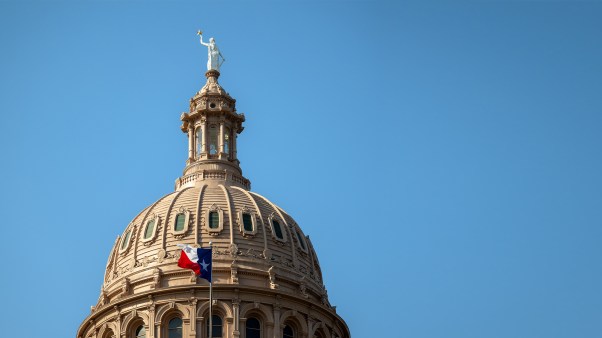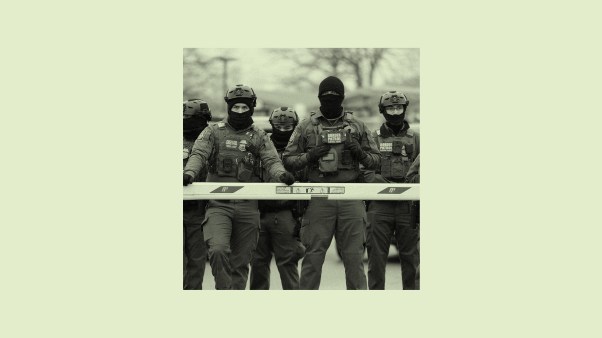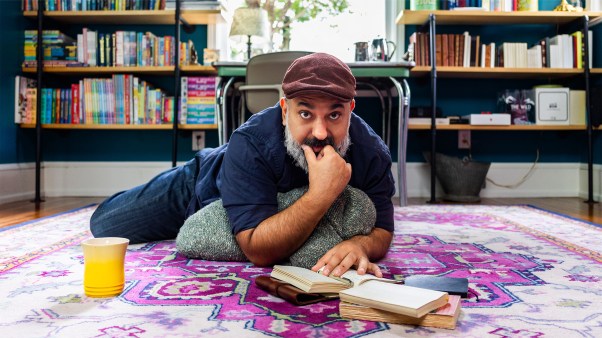Jeff Schoch was ready to be done with COVID-19 health safety regulations.
Like most ministers in the US, the pastor of Crossroads Bible Church in San Jose, California, did his best to comply with the many pandemic rules imposed by state and local governments. But as soon as they were lifted, he wanted to put them all behind him. He quickly tore down the state-mandated signs about social distancing, hand washing, and masks.
“I got rid of every visual reminder in the church,” Schoch told CT. “I was anxious, personally, to make that a memory.”
Across the country, Protestant congregations are dealing with the long-term impacts of the pandemic. A new, extensive study by Arbor Research Group and ChurchSalary, a ministry of Christianity Today, found that a lot of pastors are still in crisis. Some furloughed staff members haven’t gone back to work. And even when attendance numbers have rebounded, there are still people missing from many congregations. Christian leaders will likely be grappling with the fallout from COVID-19 for years to come.
But, surprisingly, state-level pandemic restrictions had no measurable, lasting impact on American churches. Even in places like San Jose—where the county government imposed some of the strictest rules in the country, the restrictions changed frequently, and authorities aggressively went after churches they said failed to comply—pastors like Schoch were able to just move on. The data doesn’t show any adverse effects from the government regulations.
Eric Shieh, a research consultant for Arbor Research, said that surprised him.
“You would think that the restrictions made things tougher for churches. They didn’t meet as much, and so you’d be able to see the impact that had a few years later,” he told CT. “There should be something there. But based on the data—and we have a lot of data—that’s not what happened. Actually, there’s no real correlation.”
Shieh looked at the regulations in 50 states and ranked their severity. In 9 states, government restrictions were mild to nonexistent, and ended very quickly. In 23, there was a moderate level of regulation around masks, meeting sizes, and social distancing. In another 18, there were a lot of rules and some harsh punishments.
California, for example, limited the number of people who could attend a service indoors or outdoors, banned all singing and chanting, mandated masks, and required signs telling churchgoers to “wash their hands with soap for at least 20 seconds, use hand sanitizer, and not touch their face.” There were also regulations about cleaning between services—including instructions about which chemicals to use—and washing or throwing away everything that had been touched.
“Places of worship must comply with all Cal/OSHA standards,” the state instructed in July 2020, “and be prepared to adhere to its guidance as well as guidance from the Centers for Disease Control and Prevention (CDC) and the California Department of Public Health (CDPH). Additionally, places of worship must be prepared to alter their operations as those guidelines change.”
Once Shieh ranked the severity of the state rules, he mapped the information that Arbor Research and ChurchSalary collected from their survey of 1,164 pastors from 42 denominations and qualitative interviews with 17 focus groups across the country. Measuring attendance, giving, staff levels, and several other metrics in 2022, he found that after all the regulations had been lifted (and some states, including California, had been reprimanded by the Supreme Court), there was little to no discernible difference between churches where there had been lots of restrictions and those where there had been almost none.
“The health of a church today isn’t dependent on what region it is in,” Shieh said. “It’s really internal factors—the divisions in the church and the church’s resilience.”
That doesn’t mean, however, that the health of individual churches wasn’t severely tested by pandemic rules. When the first lockdown orders were issued in California, Schoch remembered wondering if his nondenominational church would even survive. Most of the members were senior citizens and the church had been struggling for a while.
Oh great, Schoch said to himself, one more challenge. And then he prayed, This could be it, Lord.
Three miles away at Willow Glen Bible Church, the church staff and elders were scrambling to figure out what to do. There was no protocol for getting instructions on rules for meeting. People were hearing stuff on the news, checking different websites, and hearing things from other churches and church staff “like a crazy coconut telegraph of pastor’s texts.”
Family pastor David Mission recalls that the church decided very quickly to do what the county health department said, “for the good of everybody.” But then there was a problem figuring out how to interpret the rules. That was only made more complicated when the pandemic restrictions continued to evolve week to week.
“It’s a hermeneutics problem, but like you get a new book of the Bible every week and it’s different from what you had before,” Mission told CT. “We’re not trained to interpret this stuff. And we had young staff and older staff, elders with different levels of concern and different life experiences. We have some different temperaments, and we’re all trying to make sense of this message from the county health official together. It caused a lot of tension.”
But there was tension, too, in states where the government placed few burdens on religious gatherings and got rid of the restrictions quite quickly.
In Statesboro, Georgia, on the other side of the country, New Covenant Church only closed its office for a few hours. The pastor, David McLendon, sent everybody home, but then when he got home he thought, Who’s going to meet the FedEx guy to sign for all the equipment we just ordered to livestream the service? When he got back to the church, he found several staff members had had the same thought.
They livestreamed the service, but New Covenant had trouble keeping people from showing up, McLendon recalled.
“The band’s there, and the band’s spouses are showing up,” he said, “and then other people watching the livestream can see that there are people present, and some of them started showing up too.”
In May, the governor of Georgia ended the shelter-in-place order, and the charismatic congregation in Statesboro opened back up. McLendon checked with the local chief of police to make sure he’d understood the executive order correctly and then told his congregation, “If you want to come, come, or you can watch at home. … We’re going to keep the livestream, so if you need to stay home, stay home.”
Not everybody was happy with the decision. And some were fine with the decision, but thought there should have been more conversations before it was made. Several elders were mad, McLendon recalled, and one quit. Some previously active members never appeared again, and he wonders if they were offended by the decision to reopen before other churches in the area.
But the congregation has, nonetheless, grown since then. For the most part, they’ve put the brief era of pandemic restrictions behind them.
“Having the Germ-X bottles everywhere is still weird, but we have them,” McLendon said. “I think we clean the church better than we did before. The biggest difference for us is that we eventually developed a really high-quality online service. My worship guy has really worked to make it excellent.”
Back in California, the tensions have eased at Willow Glen Bible Church as well. The church staff actually talks about the creativity, collaboration, and adaptation that was required during the lockdowns with some fondness.
“Someone will say, ‘Maybe it would be nice to meet outside again. That was kind of fun when we did that,’” Mission said. “Then when we get to it, actually planning it, it’s like nope.”
Up the road, Crossroads Bible Church hasn’t died. It’s actually grown. Schoch has seen a number of young adults start coming and is scheduled to officiate a bunch of weddings. There’s new life and new energy, and the nondenominational pastor has mostly been able to put that period of government restrictions out of his mind.
He does hope, though, that going forward, he will remember some of what he learned during COVID-19.
“I became convicted about halfway through the whole crisis that, Oh, it’s not up to me. It’s up to God, if God wants this church to survive,” Schoch said. “We just kept putting one foot in front of another and God showed up.”

